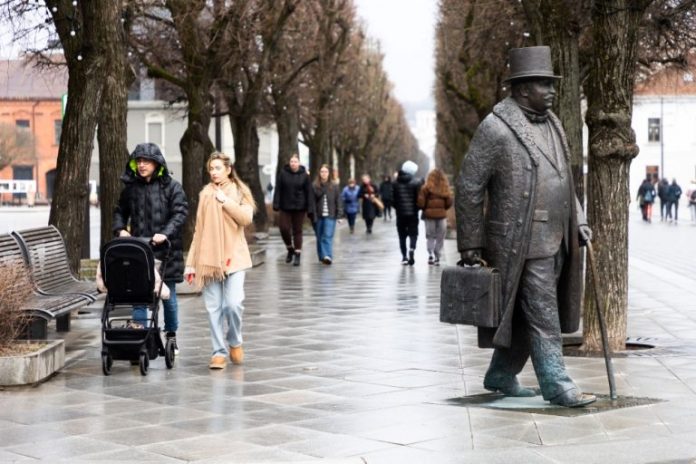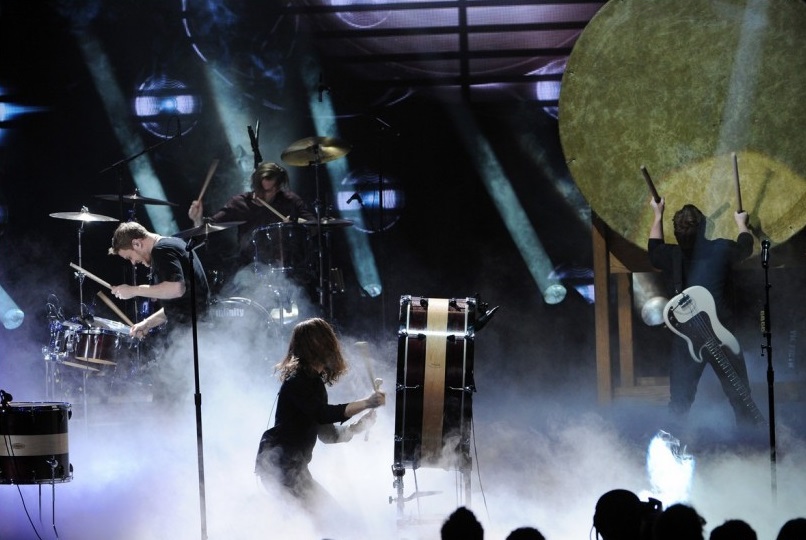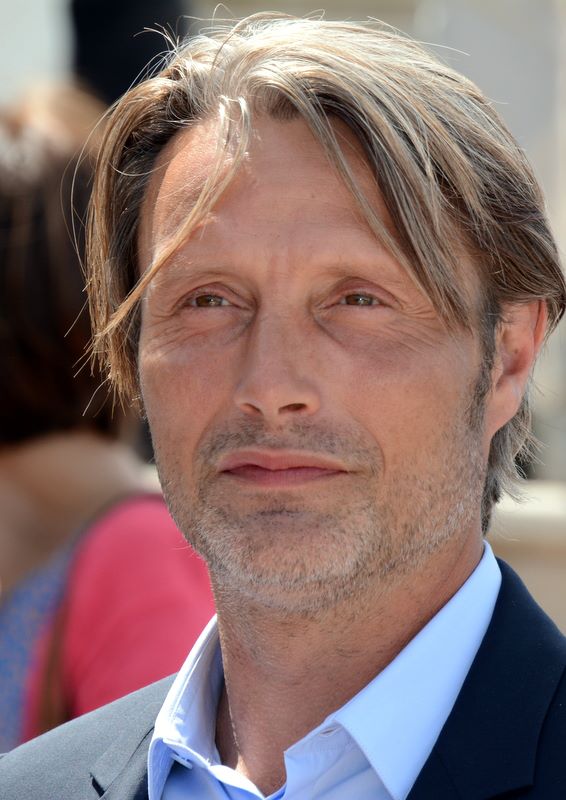1361 is the year when Kaunas was first mentioned in written sources and since then the city has continued to develop and grow. Over the years, the city’s infrastructure, culture, education and commerce have improved. In the interwar period, Kaunas was a temporary capital, but today it is a free, unique city, famous for its architecture and modernism, with countless wonderful places to visit.
Its beauty has captivated foreign tourists too. It is not for nothing that in 2017 Kaunas became the next European Capital of Culture in 2022, overtaking Klaipėda. Renaissance, Gothic and Modernist architecture tells the story of a wide range of historical events, while a wide variety of museums, parks and shopping malls offer a journey full of history and adventure that will remain in your memory for a long time and make you want to come back for more.
While Kaunas has countless wonderful places to visit, here are some of the most memorable places in Kaunas that you can bring your expat friends, colleagues or family members to.

10. IX Fort Museum
The first thing we notice in this fort is the impressive size of the monument. We can even see the tops of this monument rising into the sky from the window of the Šilainiai apartment block or while driving on the A1, the main Lithuanian highway.
1984 is the year when the monument was officially unveiled to visitors. This monument embodies a painful and brutal history and was created in memory of the victims of Nazism. The work is made up of three parts, which symbolise pain, the hope of a mother holding her baby and exaltation.
The monument was created by sculptor Alfonsas Vincentas Ambraziūnas and architects Vytautas Vielius and Gediminas Baravykas.
A museum was opened in Fort IX in 1959. 50 000 people of various nationalities were shot here. The museum shows how the prisoners lived and what their everyday life was like. Every inch of the walls of the museum reveals the tragedy of the Jewish people. Walking through the cold and creepy dungeons, you can feel the haunting spirit of the prisoners. The museum is also enriched by a wide-ranging exposition divided into four periods: the Kaunas Fortress, the Kaunas Hard Labour Prison, the Soviet occupation and the Nazi occupation and the Holocaust. The exhibition includes documents, letters, how prisoners were able to communicate with their relatives, the places where they were imprisoned and collections of artillery shells and photographs that reflect the life of a particular period.
The museum offers various guided tours and events. You can also take a walk through the beautiful full of greenery and peace IX Fort Park.

9. M.K. Čiurlionis National Museum of Art
Mikalojus Konstantinas Čiurlionis is one of Lithuania’s most highly valued artists, composers and cultural figures. M.K. Čiurlionis created both graphic and painting works. He even painted more than three hundred paintings during his creative lifetime. On top of all this, he also left a wonderful musical legacy. The composer created around 400 works. His works include a symphonic overture, poems, Lithuanian folk songs, a cantata, a string quartet and many piano pieces.
This museum was founded in 1921. It is one of Lithuania’s most important art institutions, dedicated to the work of a famous Lithuanian artist and composer who lived from 1875 to 1911. The museum was established to preserve the creative legacy of M.K. Čiurlionis.
It is in this museum that almost all of the composer’s surviving works are preserved, i.e. more than 35 500 exhibits. The works of M.K. Čiurlionis are unique. It is difficult to attribute his style of painting to a single artistic movement, but many people believe that M.K. Čiurlionis’s paintings have features of symbolism and modernism. His works often convey cosmic, philosophical and spiritual themes. In an interview, Andrius Čaplikas, a tour guide, said that he is an artist who does not sign his works. It would be impossible to find a work in the entire M. K. Čiurlionis Museum of Art that he had signed. Only a few works have the artist’s initials.
You can also listen to recordings of musical works in the museum. The museum has a special area where visitors can listen to works by Čiurlionis. It is a peaceful environment that allows you to fully engage with the music.

8. Pažaislis Monastery
Pažaislis Monastery is one of the most impressive masterpieces of the Baroque style. It is an ensemble consisting of a monastery and the Church of St. The monastery and the Church of the Visitation of the Virgin Mary to Elizabeth. This architectural ensemble is famous not only for its religious and historical importance, but also for its artistic value.
The monastery was founded in 1662 by Christopher Sigismund Pacas, a statesman of the Grand Duchy of Lithuania. The architect of the project was the Italian Giovanni Batista Frediano. Other Italian artists, including Giovanni Merli and Michelangelo Paloni, carried out the rest of the decoration and interior design.
The monastery itself is characterised by intricate ornamentation, elegant lines, ornate facades and frescoes. The museum is home to an active convent, where the Sisters of the Congregation of St Casimir live. They take care of the monastery and carry out various religious and cultural activities. In the very centre of the buildings is the Church of the Holy Trinity. The Church of the Visitation of the Virgin Mary to Elizabeth, which is well known for its impressive and majestic dome structure.
The Pažaislis Monastery has hosted a classical music festival since 1996. This festival lasts for 3 months, during which time around 30 concerts are organised. During this period, symphonic, chamber and even electronic music can be heard. During the festival you can also see famous performers. This year’s festival will feature opera soloist and tenor Edgaras Montvydas and the first performance of Jules Massenet’s opera “Therese” in Lithuania.

7. Devils’ Museum
Many people have an interest in mysterious phenomena and things. From an early age, people have been interested in demonological phenomena, grandparents tell tales about the devil and his deeds of confusion, and in folklore we can hear how the devil can change his shape and turn into a vicious dog or wolf. All the real answers about the devil can be found in the only devils’ museum in the world in Kaunas. This museum is also known as the Museum of the Works and Collections of A. Žmuidzinavičius.
The museum was opened in the house of the artist, collector and public figure Antanas Žmuidzinavičius in 1996. One side presents the collection of devils, which consists of more than 3 000 devils. Many of the devils in this museum are made of wood. The devils can be seen on various objects: Užgavėnių masks, plates, pipes, ashtrays, etc. The exhibits tell different etiological tales and fairy tales, which give an insight into how the devil came to be.
In the second part of the building, we can take a look around the A. Žmuidzinavičius Memorial House itself. Here you can see the living room, the rooms of his wife and daughter Giedre. In these rooms visitors can see how the artist himself lived. Every detail, the furniture, the piano, the paintings and many other interesting objects tell the story of life at that time.
The immersion and exploration in the history of the devils is enhanced by colour installations. Throughout the museum, light installations are grouped by theme. Bright red and black colours make visitors feel like they are in hell. There are many other light installations in the museum, but you need to visit and see for yourself to find out what they hide.

6. Museum of the History of Lithuanian Medicine and Pharmacy
Since ancient times, people have been searching for ways to prolong life, cure illness and relieve pain. Many diseases and ailments were treated with herbs before the pharmaceutical industry came along. People explored nature to find plants and animals with healing properties. All knowledge was written down and passed on from generation to generation. All the records helped to form the foundations of medicine.
The Museum of the History of Lithuanian Medicine and Pharmacy is located in the Old Town of Kaunas, in a branch of the Lithuanian University of Health Sciences. This museum depicts what a pharmacy in the city of Lithuania looked like in the late 19th and early 20th centuries. The museum shows 4 different rooms of the pharmacy: the prescription room, the coterie, the room where the stocks of medicinal substances were kept, the laboratory and the basement.
The museum shows all the tools that people used to make medicines in ancient times. Many of these tools look impressive. In today’s pharmacies, we can usually only see white shelves, which are divided according to the type of medicine. The museum also contains many preserved notes and books. One of the most interesting sights in this museum is the packaging of medicines. Here you can see how people in the late 19th century packaged and sold medicines in solid or liquid form.
Comment: I visited this museum with my course group. I am a student at LSMU, so it is useful to see a museum like this. This museum really interested me. You can see what medicines used to look like in the past and how they have evolved to the present day. When I was there, I also saw an old dental chair. It was interesting to compare it with the current dentists’ chairs and all the other equipment available. I was very fascinated by that, because I am studying dentistry. I was able to see with my own eyes what this speciality used to look like in the past and how people used to treat their various diseases. I would definitely recommend it to anyone interested in medicine and dentistry. – Emma, 22 years old, LSMU student from Sweden.

5. Lithuanian Aviation Museum
This museum is one of the most important attractions in Kaunas. It attracts people who are interested in history, aviation enthusiasts and those who are curious to learn and see everything.
The Lithuanian Aviation Museum was established in 1990 on the territory of the S. Darius and S. Girėnas Aerodrome. During this period, the museum has accumulated more than 20,000 exhibits, including 40 flying machines. In addition to all the aviation exhibits, the museum also displays the equipment of the Fire and Rescue Service.
One of the most impressive places in this museum is the outdoor exhibition. Here you can see different types of planes, the collection of gliders by Bronis Oškinis, helicopters, air force planes and sport planes used in Lithuania. However, the most eye-catching exhibit in the museum is located in the hangar. It is a replica of the legendary Lituanica, suitable for flying. It was built by the famous aviator Vladas Kensgailis. This replica was made in 1982 during the production of the film “A Flight Across the Atlantic”. The flying trainer planes at the S. Darius and S. Girėnas Aerodrome will add to the sensations of a walk through the outdoor exhibition. Always landing or taking off, the plane attracts crowds of people to keep an eye on the pilot’s next steps.
The museum allows visitors to experience the flight for themselves. There are flight simulators to try out, which make everyone feel like a real pilot. You can learn how to land a plane, test the runway and glide in the air using the simulators.

4. Yard Gallery
This gallery is located in the centre of Kaunas, among the residential buildings where Jewish families lived during the interwar period. This stand out and creative project transforms ordinary house yards into art spaces.

The yard gallery was created by artist Vytenis Jakas. The artist himself lives in the same house where he created the art space. On the walls of the house, he tells the stories of the people who lived there. Many of these stories are tragic, and contain the experiences, grievances and the Holocaust of the people who lived in the house during the Second World War. The artist’s paintings, portraits and murals can be seen here. There is also a pink elephant, 6 m long and 3 m wide. A neofresco of this pink elephant can also be seen on the walls of the buildings at 18-18a E. Ožeškienė Street. This elephant was painted by the artist Vytenis Jakas himself. It is the elephant that many people like to have their photographs next to.

The yard gallery is open to everyone and is a free art gallery. It often attracts both residents and tourists. It is important to remember that there are people living there too, so it is important to behave in a civilised manner and not disturb the peace of others.
The yard gallery popularises and encourages public art. Such projects transform abandoned places, streets and houses into lively and full of history objects.

3. CHRIST’S RESURRECTION BASILICA
This indescribably large basilica is the largest in the Baltics. The idea of building this church originated in inter-war Lithuania. The church had a meaning and a message, it was a way of saying thank you for regaining independence. Due to the outbreak of the Second World War and the subsequent Soviet occupation, the construction of the church was stopped. During the occupation, the church was transformed into a factory. It was only after the restoration of Lithuanian independence in 1990 that the construction of the church began and was completed.
Christ’s Resurrection Basilica is an object of monumental and modern architecture.

The tower, which is 70 metres high, is the most eye-catching. Every visitor can visit the observation deck on the roof. There is also an elevator for visitors to climb up comfortably. From this observation deck, you can see the whole panorama of Kaunas. We can admire Kaunas nature, greenery, the streets of the Old Town, the Kaunas Town Hall Tower and Santaka Park, where the Neris and Nemunas rivers meet.
Comment: It was a really beautiful church and very traditional inside and out. Inside it looks like many churches, but what impressed me the most was the roof of the church, especially when it is really high and you can see the whole of Kaunas from the top and have a very beautiful view. It gives a sense of peace and calm. This place should definitely be visited at least once in Kaunas. – Wesam, 24 years old, LSMU student from Sweden.

2. Central Market
This is one of the oldest and largest markets in Lithuania, located in the Urmas market town.
Kaunas Central Market employs the largest number of sellers. There is a wide range of fresh vegetables, fruit, fish, meat dairy products and a variety of baked goods. Often the sellers at this market are farmers who offer natural and organic products from their farms. The food on sale is subject to strict and high standards, so there is no need to worry about the quality and freshness of the food.
When you leave Kaunas Central Market, you will find yourself in the town of Urmas. Here you can find a wide range of goods: clothing, footwear, accessories, household items, furniture and electronics. There are also specialised shops selling specific products: gardening supplies, building materials, sports equipment, etc.
If you are tired of shopping and hungry, there are many different restaurants in Urmas where you can enjoy a delicious meal.
Comment: I have visited this market many times. I have been to Turkey many times, and this particular market in Lithuania reminds me of the big markets in Turkey. Everything is cheap, there is a lot of fresh produce and you can find everything there. This market is always crowded with people, especially the older ones. But I understand why it is always so crowded, because you can find everything here. I really enjoy my visits here and I promise to come back many times. – Gabriel, 23, LSMU student from Portugal.

1. Burger Factory
Many foreign tourists coming to Lithuania are encouraged to try traditional food. The most common dishes are cold burgers, cepelinai and kugel. But in addition to all the traditional dishes, we can offer something more interesting and equally delicious.
“Burger Factory” is a snack place located in Sodybų Street 2. This excellent, unbranded snack place offers exceptional burgers made by a real Frenchman, which are undoubtedly the best in town. These burgers are made by chef Samy Dekli. He founded this business together with his wife Aušra.

The “Burger Factory” menu features original burgers with beef, pork, chicken, and topped with bacon or egg. Be sure to try the sauces offered separately. If you want to try something new, you can also try the chef’s pancakes, waffles and salads.
Many foreigners and Lithuanians who have come to dine at this snack place say that it is a standout place not only in Lithuania but also in Europe.

And if you like the dishes of the Burger Factory, don’t forget to let us know by ringing the specially made for it bell by the door!




